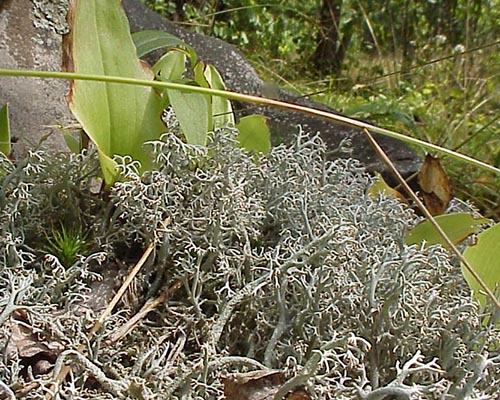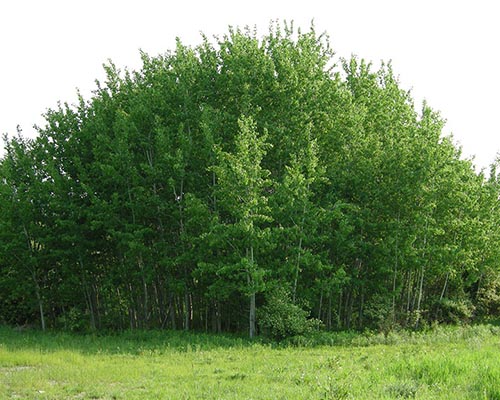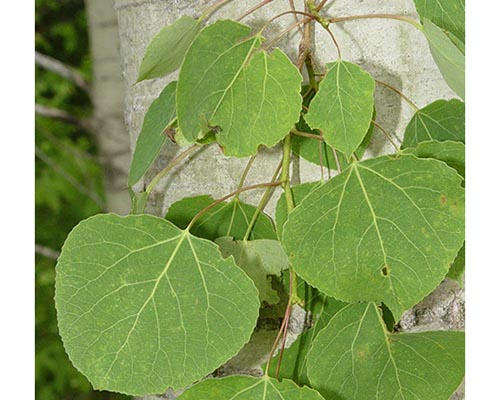Many communities of plants and animals are temporary. They exist for some period of time and then are gradually replaced by other species that will, in turn, be replaced by still others. This process is called succession.
During the last Ice Age, the Adirondacks were entirely covered by glaciers. These vast sheets of ice, thousands of feet thick, scraped the rocks bare. Any plants and animals that existed here before then were scoured away. Those glaciers disappeared about 10,000 years ago, and everything you see now — plants, animals and even soil — has formed since. So how do you get lush forests where there was bare rock only 10,000 years before?
This process is called primary succession. It begins with organisms such as lichens that can live and grow very slowly on bare rock. Lichens (see the Fungi station) break down rock by secreting acids. The freeze-thaw cycle of winter also contributes to rock destruction. Dust, sand and fine organic material are transported in by the wind. Over time, a little soil accumulates. Cold-tolerant pioneer species like grasses begin to establish, their seeds blown in or carried by birds.
Generations of these pioneers live and die, their roots eroding the rocks and their dead biomass building new layers of soil. Eventually more competitive plants invade, such as raspberry, wildflowers and even small shrubs. The soil builds and holds more moisture because it is shaded. The first pioneer trees arrive, such as fast-growing and sun-loving birch and aspen. The ecosystem begins to transition to forest. Eventually these pioneer trees are replaced by other species, slower growing but taller at maturity. The pioneers are shut out of the canopy. In the Central Adirondacks, climax communities, the final stage of succession, include the northern hardwood forest found on the region’s best soils at lower elevations and the northern coniferous forests of red spruce and balsam fir on mountain slopes (see Plant Evolution III).
The process of secondary succession is similar, but does not begin from the blank slate of bare rock. Instead, it begins with a disturbance of some kind to an existing community — the death of a large tree that opens up a gap in the canopy, a wildfire that kills many large trees, an avalanche that clears a patch on a mountainside. Human activity such as logging can lead to secondary succession, too. After these events, soil is still present, so the earliest stages of primary succession are not needed. In addition, seeds, roots and underground organs such as bulbs and corms may still be present, allowing some species to immediately take advantage of the open niche. Which species enter first and what the climax community will eventually be, depends on the site — its soil, its moisture, its climate, its seed bank, its history. Many climax communities in the Adirondacks are self-replicating forests dominated by eastern hemlock, yellow birch and sugar maple, although American beech and white pine are also common.
In 1999, a fire burned the western slopes of Noonmark Mountain, creating a natural laboratory where scientists could study secondary succession. Before the fire, the slopes had a typical mountainside spruce-fir climax community. The expectation, from historical post-fire observations, was that mountain paper birch (Betula cordifolia, a species similar to paper birch, Betula papyrifera; (see Plant Evolution IV) would quickly colonize after the fire. However, quaking aspen (Populus tremuloides) colonized instead, along with bigtooth aspen (P. grandidentata). The scientists hypothesize that this may be due in part to climate change (see the Climate Change station) that has created warmer, wetter conditions.
You can see quaking aspen here, named for the way its leaves “quake” in even a light breeze. It is a common pioneer species because it grows quickly and thrives in direct sunlight. Quaking aspen commonly grows by sprouting from the roots of existing trees. This allows it to spread into disturbed areas very rapidly. Whole stands of aspen may actually be a single organism, initially starting from one seedling, and through the production of “suckers,” now sharing a single root structure.



